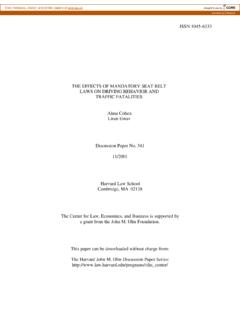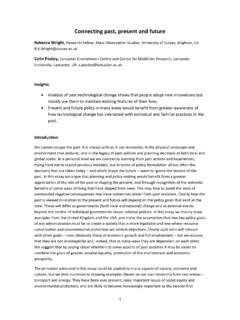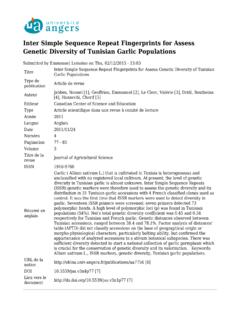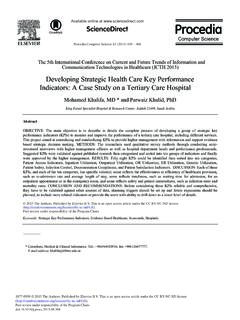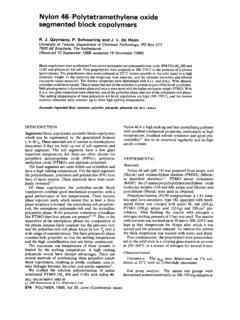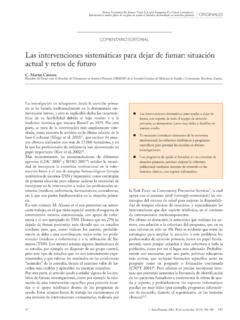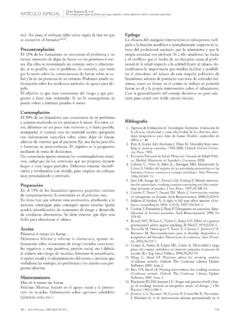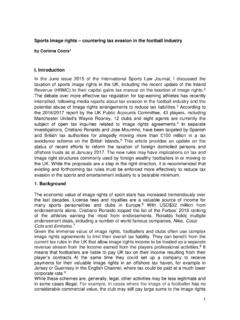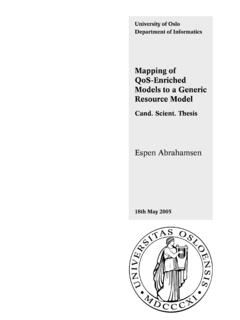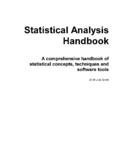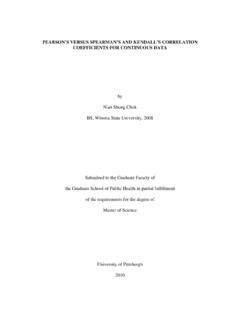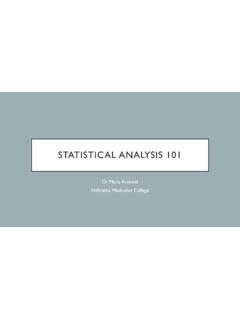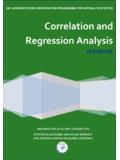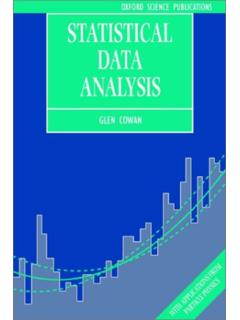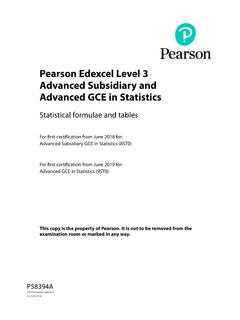Transcription of Sample Size Guideline for Correlation Analysis
1 World Journal of Social Science Research ISSN 2375-9747 (Print) ISSN 2332-5534 (Online) Vol. 3, No. 1, 2016 37 Sample Size Guideline for Correlation Analysis Mohamad Adam Bujang1,2 & Nurakmal Baharum1 1 Biostatistics Unit, National Clinical Research Centre, Hospital Kuala Lumpur, Kuala Lumpur, Malaysia 2 Faculty Computer and Mathematical Sciences, Universiti Teknologi Mara, Shah Alam, Selangor, Malaysia * Mohamad Adam Bujang, E-mail: Abstract Correlation Analysis is a common statistical Analysis in various fields. The aim is usually to determine to what extent two numerical variables are correlated with each other.
2 One of the issues that are important to be considered before conducting any Correlation Analysis is to plan for the sufficient Sample size. This is to ensure, the results that to be derived from the Analysis be able to reach a desired minimum Correlation coefficient value with sufficient power and desired type I error or p-value. Sample size estimation for Correlation Analysis should be in line with the study objective. Researchers who are not statistician need simpler Guideline to determine the sufficient Sample size for Correlation Analysis . Therefore, this study aims to tabulate tables that show Sample size calculation based on desired Correlation coefficient, power and type 1 error (p-value) values.
3 Moving towards that, simpler guidelines are proposed to estimate sufficient Sample size requirements in different scenarios. Keywords coefficient, Correlation , Sample size 1. Introduction Pearson Correlation test is a univariate statistical test to measures the magnitude of Correlation between two numerical variables. This statistical test is commonly used for research in various fields. The different between Correlation and Simple Linear Regression (SLR) is with regards to prediction. In SLR, researchers are able to predict outcome based on a set of predictors.
4 Usually in SLR, the condition of variables whether is a predictor or outcome is justified. Unlike Correlation test, both variables may correlate with each other but it may not a relationship of predictor and outcome (Krzanowsk, 1988; Rodriguez, 1982). Sample size Guideline has to be guided with the determination of sizeable effect size that researchers can accept or tolerate. The lacking on this may contribute to publication bias in research (K hberger et al., 2014). Meaning that, the desired effect size should also be prioritized besides setting the reasonable cut offs for p-value and power (example: p-value with and power with 80%) (American Educational Research Association, 2006; Thompson, 2009; American Psychological Association, brought to you by COREView metadata, citation and similar papers at by Scholink World Journal of Social Science Research Vol.)
5 3, No. 1, 2016 38 Published by SCHOLINK INC. 2010). There are free software available to calculate Sample for Correlation test (StatsToDo, 2014; Sample Size Calculators, 2016). Besides that, there were also papers published with regards to Sample size requirement for Correlation test (Faul et al., 2009; Bonett & Wright, 2000). Although the free software and published papers are available, however researchers especially who majority are non statisticians may need simpler Guideline regarding Sample size requirement for Correlation Analysis . This is because Sample size determination is very much depends on the study objective besides knowing the statistical test to be used to answer the objective.
6 Researchers need to understand the scenario and later to determine an appropriate Sample size for their study. Therefore, this study was conducted with the aims are to produce tables of Sample size requirement for Correlation test and explain the Guideline on how to use these tables. The scope of this paper is suitable for non statisticians for example clinicians who do research in clinical setting. They will know how many Sample need to be collected and why they planned for the estimated Sample size. 2. Methodology Sample size for Correlation was generated using Power Analysis and Sample Size Software (PASS) version Sample size calculations were conducted for one Correlation test and inequality tests for two correlations .
7 The procedures of the two tests are listed under Correlation category. Once the procedure is selected, the Data tab would appear. In this Data tab contains parameters and options that helps to calculate the Sample size. The option for Solve For provides selection of parameters to be solved. The parameters are Power, Beta or N. Parameter N was selected since our interest is to calculate the Sample is the probability of rejecting a false null hypothesis. It is also equal to one minus Beta. While Beta is the probability of type II error. The value of both Power and Beta must between zero and one.
8 Power of (Beta = ) or (Beta = ) are an acceptable value and commonly used. In this study, selection of Power are provide which are and The value of Alpha represents the probability of a type I error. Value of Alpha is between zero and one however, value of is used in the study. R0 (Baseline Correlation ) is the value of Correlation sets at null hypothesis or the value of0 . Note that the value of Correlation ranges between -1 and +1. The value of R0 usually set as 0 however in this study we used diverse value of R0 which set from to as an option. R1 (Alternative Correlation ) is the value of Correlation at alternative hypothesis or the value1.
9 In this study, value of R1 are considered between to Hypothesis Testing This part provides an option for the alternative hypothesis. It specifies the direction of the hypothesis. The null hypothesis is set as 100=: H. The selections for the alternative hypothesis are: 10 :RRHa. This is for two-tailed test. It is use when the objective is to test whether the Correlation values are different. World Journal of Social Science Research Vol. 3, No. 1, 2016 39 Published by SCHOLINK INC. 10<:RRHa or 10>:RRHa are for one-tailed test.
10 All calculations are based on the algorithm described by Guenther (1977) for calculating the cumulative Correlation coefficient distribution. 3. Results Sample size tables for one Correlation test are presented in Table 1 and Table 2. For R0 is equal to zero, Sample size of 782 is needed to be able to detect Correlation coefficient of with alpha of and power of When Correlation coefficients are increased to , , , , , , and , the Sample sizes are reduced to 193, 84, 46, 29, 19, 13, 9 and 6 respectively. For R0 is not equal to zero, the larger Sample size is needed when the different between R0 and R1 is smaller.
